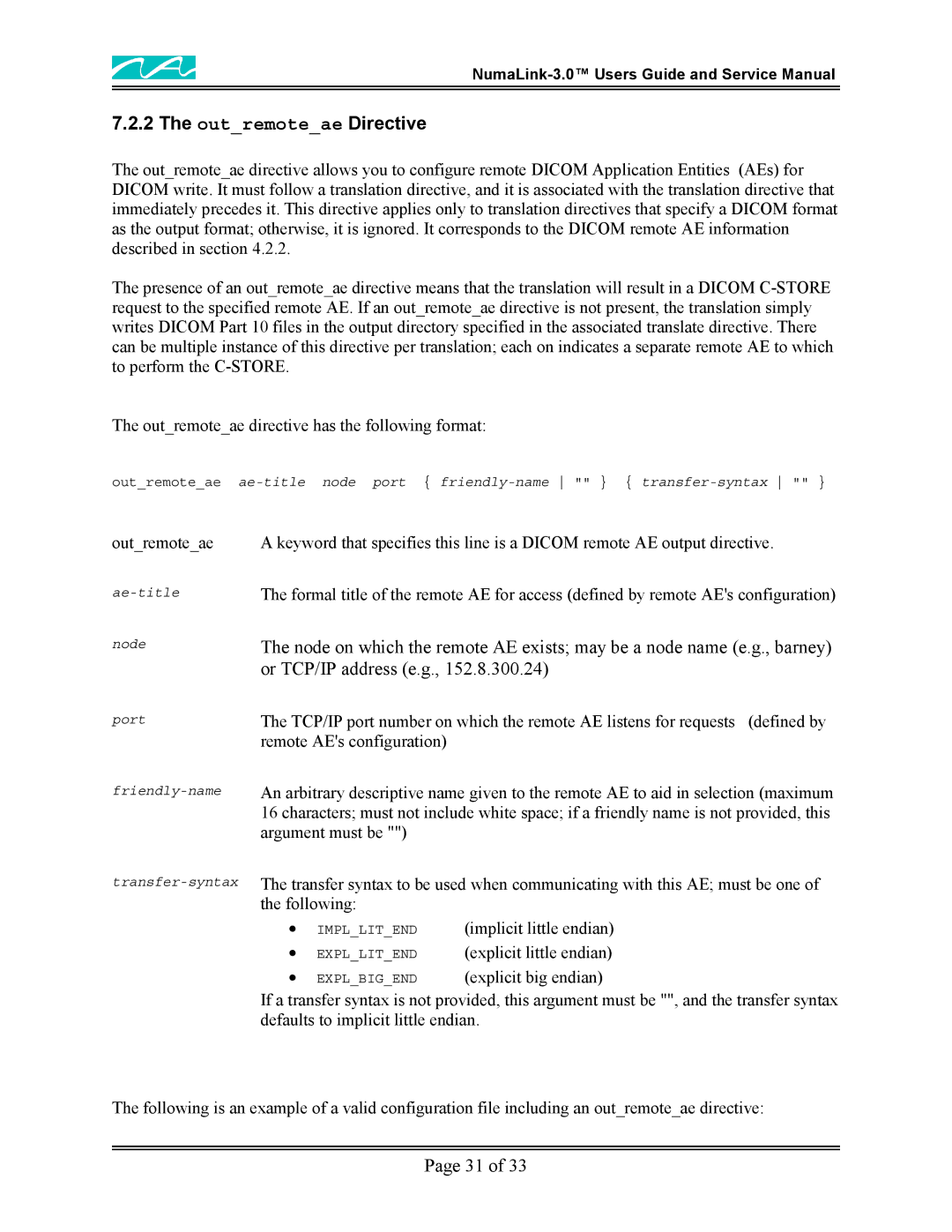
7.2.2The out_remote_ae Directive
The out_remote_ae directive allows you to configure remote DICOM Application Entities (AEs) for DICOM write. It must follow a translation directive, and it is associated with the translation directive that immediately precedes it. This directive applies only to translation directives that specify a DICOM format as the output format; otherwise, it is ignored. It corresponds to the DICOM remote AE information described in section 4.2.2.
The presence of an out_remote_ae directive means that the translation will result in a DICOM
The out_remote_ae directive has the following format:
out_remote_ae
out_remote_ae | A keyword that specifies this line is a DICOM remote AE output directive. |
The formal title of the remote AE for access (defined by remote AE's configuration) |
node | The node on which the remote AE exists; may be a node name (e.g., barney) |
| or TCP/IP address (e.g., 152.8.300.24) |
port | The TCP/IP port number on which the remote AE listens for requests (defined by |
| remote AE's configuration) |
An arbitrary descriptive name given to the remote AE to aid in selection (maximum | |
| 16 characters; must not include white space; if a friendly name is not provided, this |
| argument must be "") |
The transfer syntax to be used when communicating with this AE; must be one of | |
| the following: |
•IMPL_LIT_END
•EXPL_LIT_END
•EXPL_BIG_END
(implicit little endian) (explicit little endian) (explicit big endian)
If a transfer syntax is not provided, this argument must be "", and the transfer syntax defaults to implicit little endian.
The following is an example of a valid configuration file including an out_remote_ae directive:
Page 31 of 33
